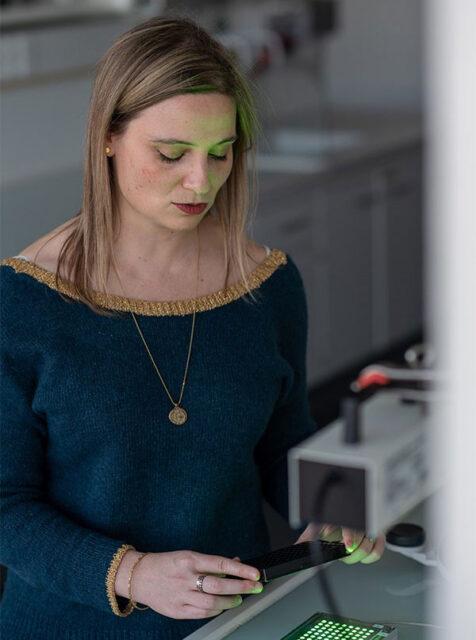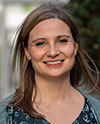Inspired by nature, Olalla Vázquez pursues multidisciplinary research focused on the synthesis of novel photosensitive molecules to sense biological processes and remotely control the cellular machinery behind relevant disease-related processes. Discover her refreshing portrait as a source of inspiration for your young lab leaders seeking an harmonious leadership style when directing, motivating, guiding, and managing people.

Why are you active in the field of chemical biology?
As a chemists, we are in an unique position to address biological problems because chemistry is the language that explains life. Understanding and manipulating biological systems is fascinating.
Describe the most intense moment of your career.
Hopefully, still waiting for it. So far, setting and establishing my own lab in a foreign country was the most intense moment. Exciting and scary at the same time. I could not miss out on this opportunity. Then, the shared feeling when all the hard work paid off — very intense!
Which is the best idea you ever had?
Professionally speaking, choosing my first PhD students. I will not be here without them.
Do you have a role model or a driving force?
All the time, I see excellent role models in different aspects around me. For example, my PhD supervisor, Jose Luis, taught me that you could do excellent science with a small lab from everywhere. It is a matter of being resourceful. In general, I always keep something from the people I interact with. I try to combine their positive features and make a better version of myself; this must come from my many years as a swimmer. In the end, life is a constant learning process, and I am lucky because I love learning!
The philosophy along which lines you lead your lab?
I strive to lead my lab from honesty, comprehension, equality and kindness. Our driving force is scientific excellence, which can only be achieved with solid understanding, creativity, rigorosity, responsibility, motivation and teamwork. Learning from our mistakes is a must too.
Pick a paper you praise for the elegance of its demonstration.
Oh, this is a tricky one; there are so many! I would pick Nature 1953, 173, 737: Molecular Structure of Nucleic Acids: A Structure for Deoxyribose Nucleic Acid. This article features the importance of understanding biology at the atomic level. Thus, the discovery of the DNA structure suggested the possibility of replication for the genetic material. Unfortunately, Rosalind Franklin was not included in this article, although her X-ray photograph of the DNA crystal is there, and it is the unmistakable evidence.
Can you shed light on the relevance of inter-disciplinarity for scientific breakthroughs?
The greatest world’s threats, such as climate change, water crisis or hunger, are too complex, and therefore, demand interdisciplinary approaches. They cannot be fitted in the traditional divisions because they require sophisticated tools and mindsets, which are only achievable by “thinking outside the box”. Working in the interface with scientists from different fields promote these unique approaches.
Define research with just three words
Curiosity, passion, consistency
How do you match the words beauty and science?
The absolute perfection of science is beautiful. The most visual way that comes to my mind to express this is fractals. Besides, scientific creativity is art, and art is beautiful.
A piece of advice you’d like to give to the young generation of research?
Do what you love; you only live once. Enjoy it!
A book, song, poem, music or painting that you spot out and get inspiration from?
The work of Chema Madoz, a builder of visual poetry. Nothing is what it seems. Take a quiet moment, look at it again. Neat, simple and breathtakingly beautiful.

Olalla Vázquez is an Associate Professor in Chemical Biology at the University of Marburg (Germany). She graduated in Chemistry and received her PhD in Organic Chemistry (2010) from the University of Santiago de Compostela (Spain). There, Olalla worked on artificial transcription factors and fluorescent DNA binders under the supervision of Prof. Jose Luis Mascareñas and Prof. Eugenio M. Vázquez. She visited Prof. Gregory L. Verdine (2006) at Harvard University and Prof. Oliver Seitz (2008) at Humboldt Universität zu Berlin. Afterwards, she returned to Berlin to explore RNA-templated reactions for cancer therapy as Marie Curie postdoctoral fellow. In 2014 she was appointed as Assistant Professor at the University of Marburg to manage the newborn Chemical Biology division. In April 2020, Olalla successfully passed her tenure evaluation, and consequently, she was promoted to Associate Professor in January 2021. Her main interests are focused on the development of innovative optochemical tools combining organic chemistry and biological approaches.

Leave a comment
The editors reserve the right not to publish comments or to abridge them.